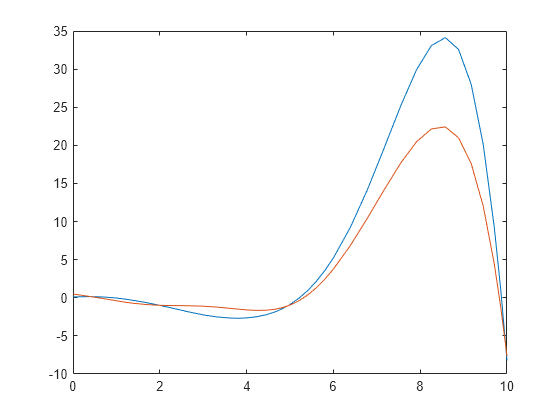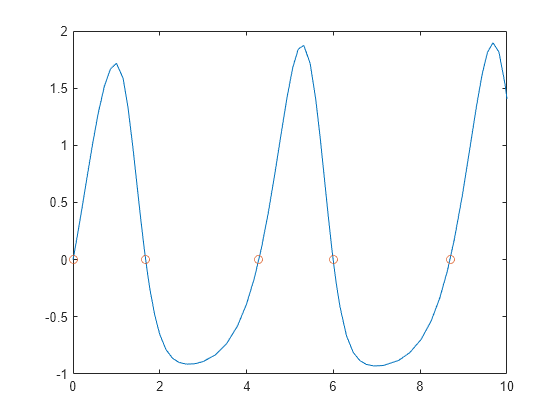dde23
求解带有固定时滞的时滞微分方程 (DDE)
说明
示例
输入参数
输出参量
算法
dde23 跟踪不连续性并使用显式龙格-库塔 (2,3) 对和插值对 ode23 求积分。它通过迭代来采用超过时滞的步长。
参考
[1] Shampine, Lawrence F., and S. Thompson. "Solving DDEs in MATLAB." Applied Numerical Mathematics 37, no. 4 (June 2001): 441–458. https://doi.org/10.1016/S0168-9274(00)00055-6.
[2] Kierzenka, Jacek. "Tutorial on Solving DDEs with DDE23." MATLAB Central File Exchange. Updated September 1, 2016. https://www.mathworks.com/matlabcentral/fileexchange/3899-tutorial-on-solving-ddes-with-dde23.
[3] Willé, David R., and Christopher T. H. Baker. "DELSOL—a Numerical Code for the Solution of Systems of Delay-Differential Equations." Applied Numerical Mathematics 9, no. 3 (April 1992): 223–234. https://doi.org/10.1016/0168-9274(92)90017-8.
版本历史记录
在 R2006a 之前推出

